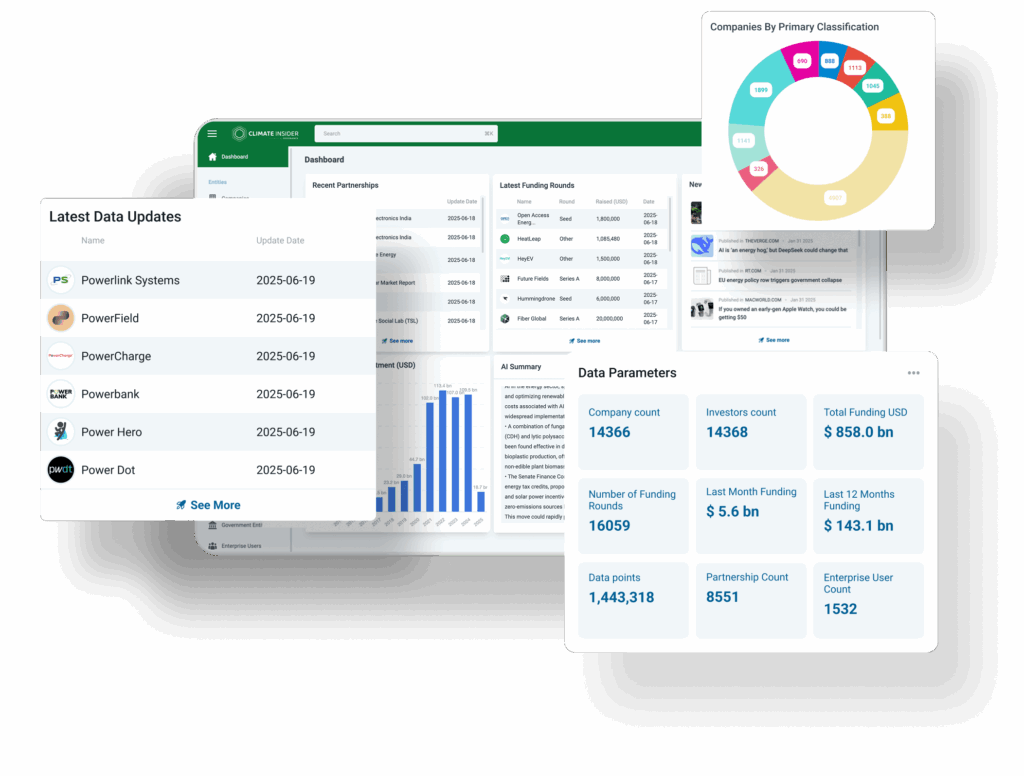The SAP Net-Zero Strategy: Pioneering a New Era in Corporate Climate Responsibility
As global enterprises face increasing pressure to align with climate goals, SAP, the German software giant, has taken a proactive stance toward sustainability. In 2024, the company will enhance its commitment to environmental conservation, further embedding its net-zero strategy. SAP’s ambition to balance the emissions it produces with those it removes is aligned with the Science Based Targets initiative (SBTi) Net-Zero Standard, a benchmark for climate-conscious organizations. By 2023, SAP proudly achieved carbon neutrality, but the company is now shifting its focus from maintaining neutrality to implementing more targeted reductions across its supply chain and operations.
The new phase of SAP’s strategy aims to reduce emissions from several key areas: its internal operations, energy procurement, employee travel, and external activities such as data center usage by clients. The emphasis on emissions reductions, paired with carbon removal technologies, underscores SAP’s commitment to not just offset emissions but to actively minimize its carbon footprint. This marks a significant shift in corporate sustainability, signaling a global responsibility that extends beyond SAP’s internal operations to the broader ecosystem.
SAP’s net-zero journey is expected to generate a ripple effect across industries as more companies recognize the importance of taking climate action that goes beyond conventional carbon neutrality.
SAP’s Extended Sustainability Initiatives: Reforestation, Ecosystem Protection, and Beyond
SAP’s sustainability efforts are not confined to corporate boardrooms; they span global landscapes through its comprehensive ecosystem restoration initiatives. A standout feature of SAP’s environmental impact strategy is its ambitious tree-planting target: 21 million trees by 2025, with aspirations to increase this to 25 million by 2030. This initiative directly contributes to the company’s carbon removal strategy, with reforestation being a cornerstone in the fight against climate change. By absorbing atmospheric carbon dioxide, these trees serve as natural carbon sinks.

SAP’s ecosystem-focused initiatives extend to mangrove swamps and wetlands, both of which are crucial for biodiversity and carbon storage. Mangroves, for instance, sequester up to four times more carbon than terrestrial forests, and wetlands act as buffers against flooding while storing significant amounts of carbon. Protecting these ecosystems not only supports biodiversity but also amplifies SAP’s overall sustainability efforts.
The company’s reforestation and conservation projects have spanned countries such as Senegal, Rwanda, India, Indonesia, Guatemala, and Mexico. Partnering with reputable organizations, SAP ensures that its investments yield measurable results. The focus on project rigor and accountability has become a hallmark of SAP’s approach, which demands verifiable environmental benefits for each investment.
Additionally, SAP’s involvement with the Livelihood Carbon Funds (LCF) expands its reach into community-driven restoration projects. These initiatives not only help restore ecosystems but also provide sustainable livelihoods for local populations, addressing both environmental and social dimensions of sustainability.
Financial Commitments to Global Climate Solutions: SAP’s Key Strategy for Broadening Impact
A core element of SAP’s approach is its financial commitment to climate initiatives beyond its immediate corporate operations. Recognizing that corporate decarbonization alone is not sufficient to meet global climate goals, SAP strategically invests in climate projects that have broad, global impacts. These financial contributions focus on restoring ecosystems, supporting biodiversity, and fostering low-carbon economies in regions where resources are often limited.
SAP ties its financial contributions to its annual carbon emissions, creating a direct correlation between the company’s environmental impact and its fiscal responsibility. This model ensures that SAP remains accountable for its emissions, while simultaneously contributing to initiatives that have the potential to combat climate change on a larger scale. Notably, these contributions are not limited to carbon removal efforts but also support biodiversity conservation and social development, further expanding the scope of SAP’s sustainability impact.
The financial investment strategy has proven effective, particularly in under-resourced regions where local governments may lack the capacity to fund large-scale environmental initiatives. SAP’s contributions not only mitigate climate change but also support local economies, contributing to a virtuous cycle of environmental and social sustainability.
SAP’s Leadership in Corporate Sustainability: A Decade of Accountability and Innovation
SAP’s commitment to sustainability is not new. Since launching its SAP Integrated Report in 2012, the company has demonstrated leadership in corporate transparency and environmental accountability. This report integrates financial and non-financial data, tracking SAP’s environmental performance and progress toward its sustainability goals. The transparency embedded in this reporting model has set a precedent for how global corporations can embed sustainability into their core strategies rather than treating it as an isolated initiative.
Moreover, SAP’s decision to tie Executive Board members’ compensation to their performance in reducing carbon emissions represents a groundbreaking shift in corporate governance. This move aligns leadership incentives with environmental performance, ensuring that sustainability is integrated at the highest levels of decision-making within the company. Such accountability highlights SAP’s ambition to become a leader in sustainable business practices, influencing not only its own operations but the wider business community.
The company’s extensive suite of products also reflects its dedication to promoting sustainability across industries. SAP’s solutions for enterprise resource planning (ERP) and business intelligence (BI) now incorporate sustainability metrics, enabling clients to monitor and reduce their own environmental impact. By equipping businesses with the tools to manage sustainability alongside traditional financial performance, SAP amplifies its role in driving the global transition to a low-carbon economy.
Climate Insider Analysis: SAP’s Path to Long-Term Sustainability Leadership
SAP’s strategic focus on net-zero emissions by 2030 sets a new benchmark for corporate sustainability. By integrating environmental responsibility into every facet of its operations, SAP demonstrates how large-scale enterprises can be catalysts for meaningful climate action. The company’s holistic approach, which includes reforestation, ecosystem protection, and financial contributions to global climate solutions, underscores a growing recognition that businesses must take a multi-dimensional approach to sustainability.
As more companies follow SAP’s lead, we may witness a transformative shift in how corporations engage with climate goals. SAP’s decision to hold itself accountable for its emissions—through both operational improvements and external investments—exemplifies a forward-thinking model of corporate responsibility. The integration of sustainability into executive compensation, product offerings, and global climate projects cements SAP’s position as a leader in the fight against climate change.
Looking ahead, SAP’s continued efforts to reduce emissions and protect ecosystems will likely serve as a blueprint for other organizations navigating the complexities of sustainable development. As the global climate crisis intensifies, SAP’s approach highlights the importance of comprehensive, long-term strategies that extend beyond individual corporate boundaries and contribute to broader, systemic change.
Featured Image: Credit: SAP








